March 2024
The global advanced ophthalmology technology market size accounted for USD 8.45 billion in 2024, grew to USD 9.08 billion in 2025 and is anticipated to reach around USD 17.43 billion by 2034, representing a CAGR of 7.51% between 2024 and 2034. The North America advanced ophthalmology technology market size is calculated at USD 3.21 billion in 2024 and is expected to grow at a fastest CAGR of 7.62% during the forecast year.
The global advanced ophthalmology technology market size is calculated at USD 8.45 billion in 2024 and is projected to surpass around USD 17.43 billion by 2034, expanding at a CAGR of 7.51% from 2024 to 2034. The rising cases of eye infection and eye disease in the population due to the aging effect and environmental conditions are driving the growth of the advanced ophthalmology technology market.
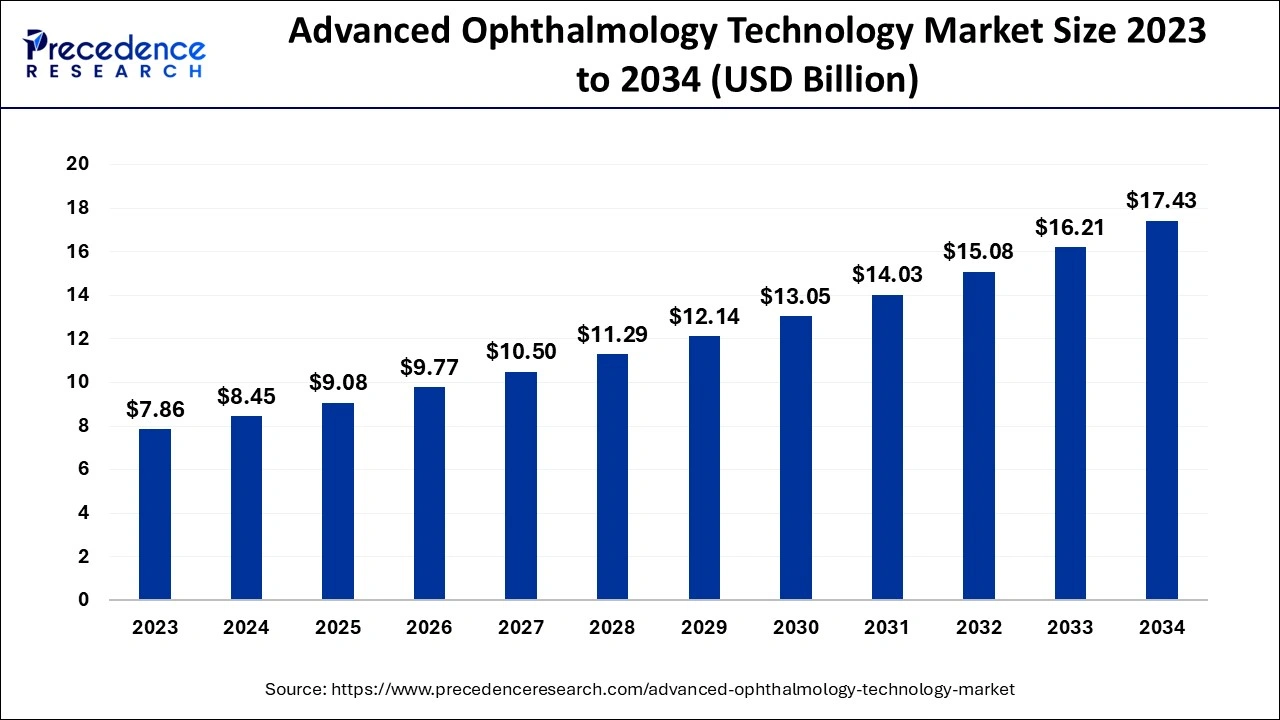
The U.S. advanced ophthalmology technology market size is exhibited at USD 2.63 billion in 2024 and is predicted to be worth around USD 5.54 billion by 2034, growing at a CAGR of 7.69% from 2024 to 2034.
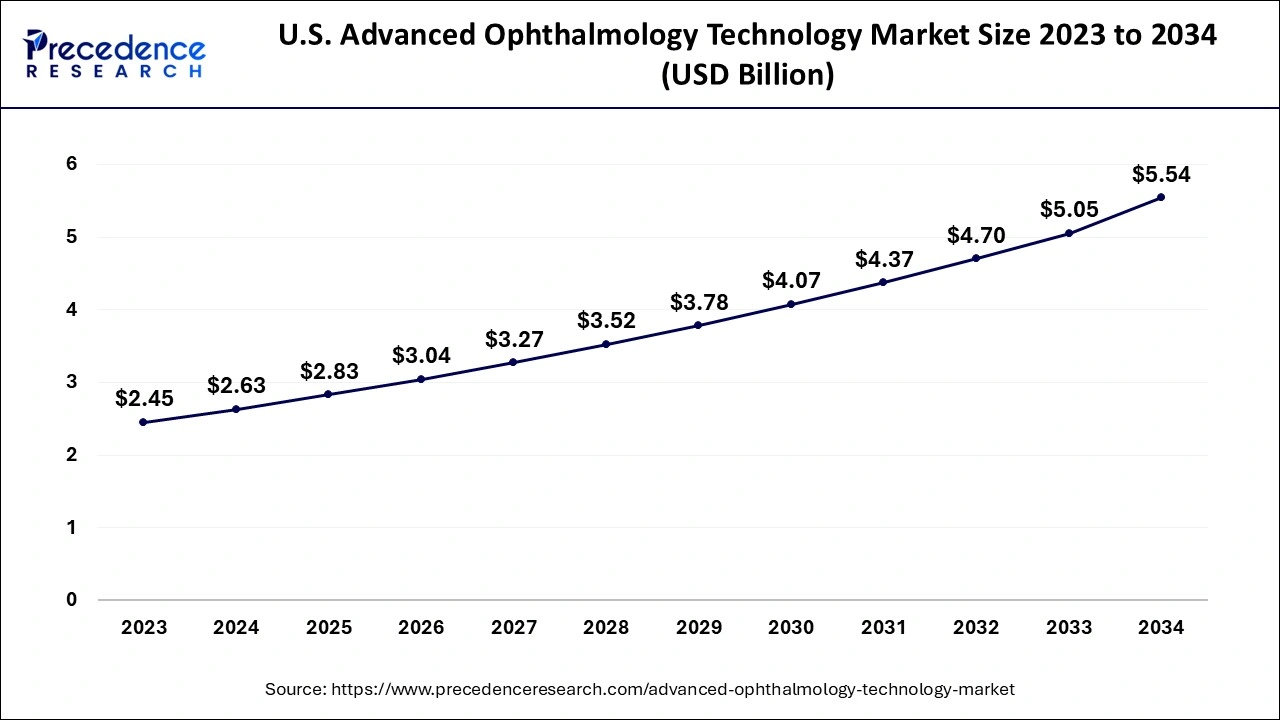
North America dominated the advanced ophthalmology technology market in 2023. The growth of the market is attributed to the rising advancement and technological adaptation in healthcare and pharmaceuticals. The rising geriatric population and increasing cases of eye-related disease in the older and younger population are driving the demand for ophthalmology treatment. Regional countries like the United States and Canada are the leading contributors to the expansion of technologies around the world, and the greater availability of the leading healthcare and technology players is collectively driving the growth of the advanced ophthalmology technology market across the region.
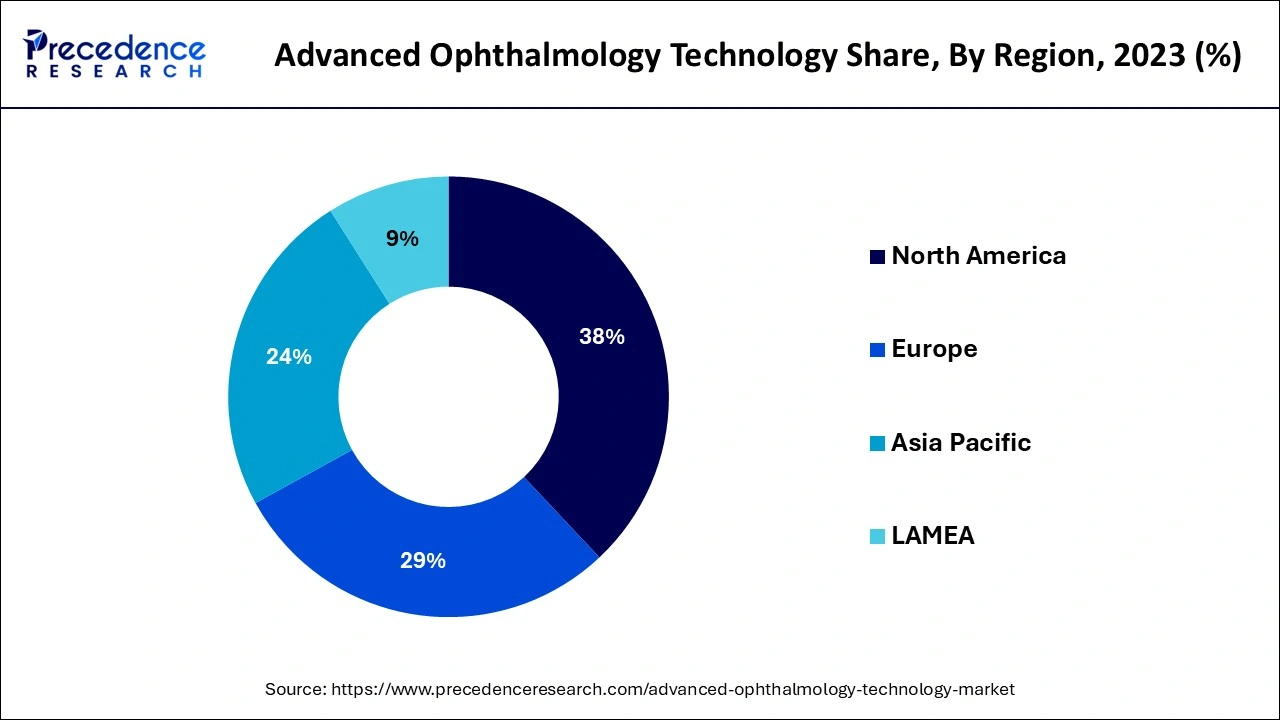
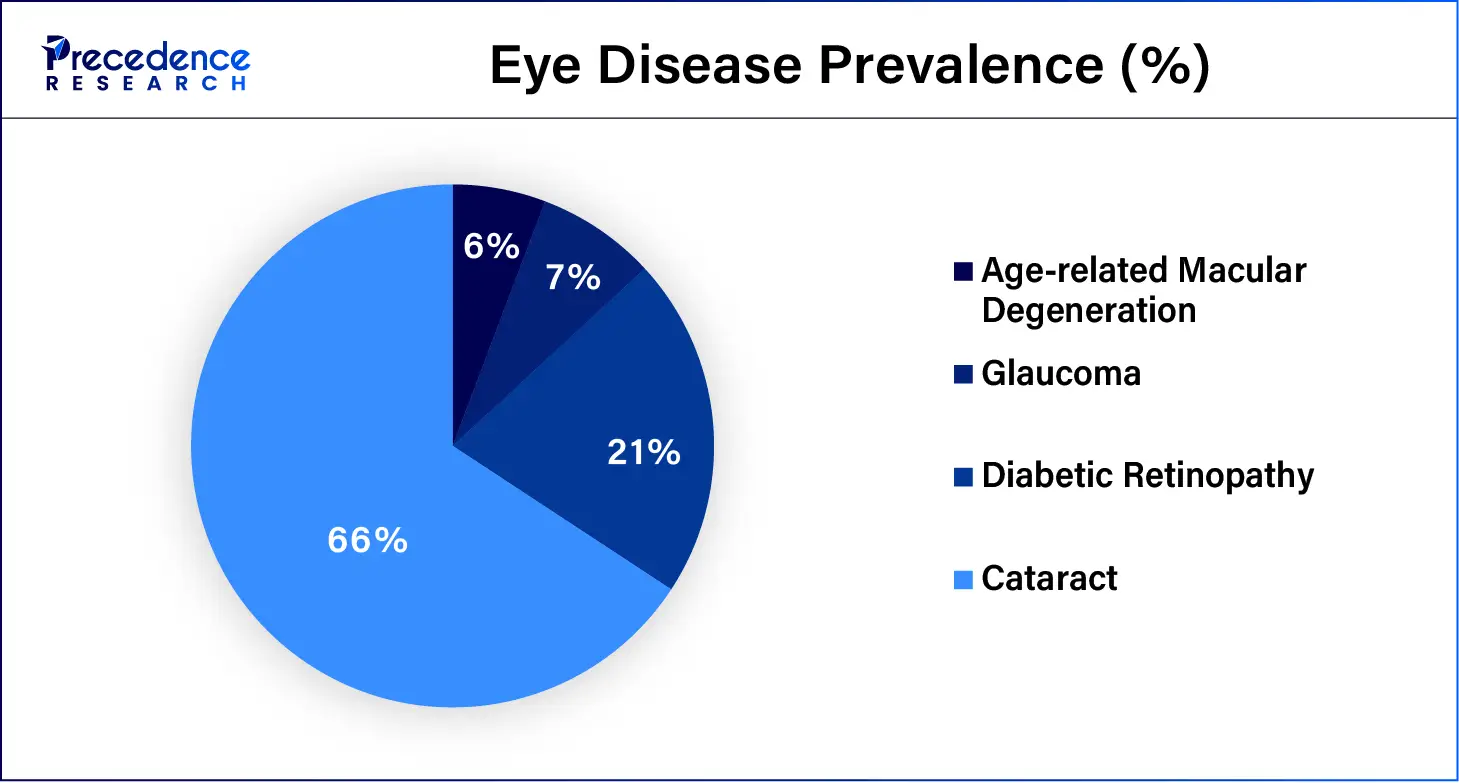
Asia Pacific expected the fastest growth in the market during the forecast period. The growth of the market is increasing due to the rise in the geriatric population, which is experiencing an increased number of eye-related diseases, which causes the increased demand for effective and precise diagnostics and treatment processes that drive the demand for advanced ophthalmology technology. Further investment in the advancement of healthcare technologies by the public and private sectors is accelerating the growth of the advanced ophthalmology technology market in the region.
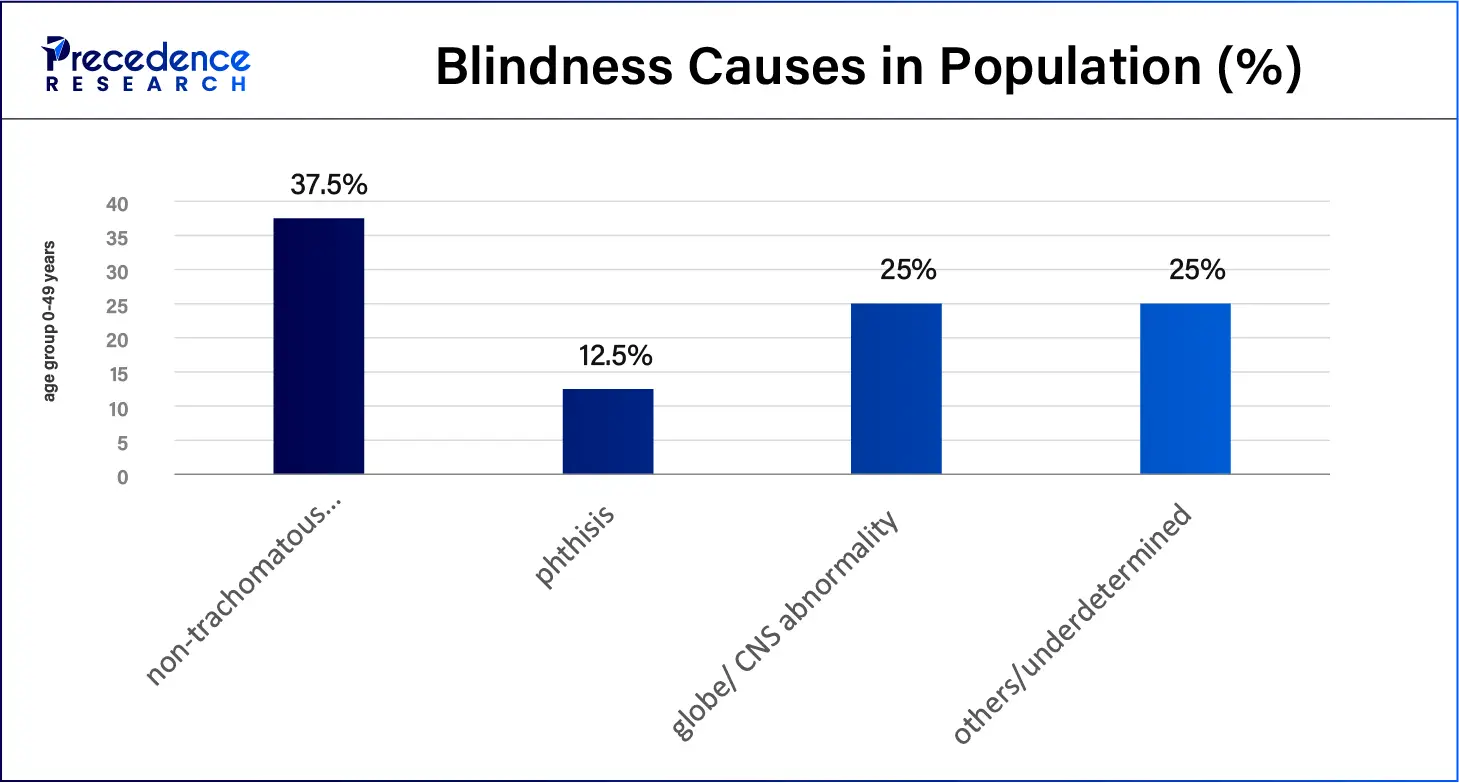
Ophthalmology is the study of the treatment of eye-related diseases. In the human body, the eye is one of the smallest and most delicate organs that requires specialized equipment for detecting and diagnostics. The ongoing technological evaluation in ophthalmology is driving the advancement in the equipment or the devices that help in the diagnostics of the eye, including objectives, lenses, ultrasound, cameras, laser, infrared sensors, and others. With the evaluation of technology, ophthalmology also uses smart innovations in technology such as virtual reality, 3D imaging, big data, artificial intelligence (AI), and others. The advanced ophthalmology technology consists of surgical instruments, lasers, and advancements in biotechnology that are used to provide enhanced accuracy and precision in treatment, further driving the growth of the advanced ophthalmology technology market.
How Can AI Impact the Advanced Ophthalmology Technology Market?
The evaluation of AI in healthcare and other fields or actions is truly revolutionizing the entire work environment of the industry. AI enables automated diagnostics and imaging, though it can help detect or predict the disease course. In the area of ophthalmology, artificial intelligence is being heavily explored for the detection, treatment, and surveillance of several diseases. AI is being used in several ophthalmology fields, including glaucoma, diabetic retinopathy, age-related macular degeneration, retinal vascular occlusions, retinopathy of prematurity, cataract, keratoconus refractive errors, squint, retinal detachment, and ocular cancers.
| Report Coverage | Details |
| Market Size by 2034 | USD 17.43 Billion |
| Market Size in 2024 | USD 8.45 Billion |
| Market Size in 2025 | USD 9.08 Billion |
| Market Growth Rate from 2024 to 2034 | CAGR of 7.51% |
| Largest Market | North America |
| Base Year | 2023 |
| Forecast Period | 2024 to 2034 |
| Segments Covered | Type, End-use, and Regions |
| Regions Covered | North America, Europe, Asia-Pacific, Latin America and Middle East & Africa |
Rising number of eye-related diseases around the world
The rising cases of eye-related diseases around the world due to the rising geriatric population, changing lifestyle habits, environmental conditions, increasing pollution rate, and other genetic factors are causing a higher number of eye infections or diseases in people. The rising economic development in the countries and the rising per capita income are driving awareness regarding healthcare and related diseases, which are increasing the treatment related to ophthalmology. Additionally, the rising advancement and the launch of further technologies and products related to ophthalmology are collectively driving the growth of the advanced ophthalmology technology market.
High cost
The increased cost of ophthalmology treatment due to the advanced technological use and the cost of the technology limiting the adoption of it by small and medium healthcare institutes are restraining the growth of the advanced ophthalmology technology market.
Adoption of robotics in ophthalmology
The rising advancement in technology and the integration of robotics in the ophthalmology surgical process help increase the dexterity and precision of surgical procedures, minimizing the risk of human errors and enhancing surgical outcomes. Robotics are valuable tools in the surgical process that perform delicate maneuvers and surgeries with greater precision. As compared to human surgeons, robotics has great potential in intraocular surgical applications that extend the chances of improving or saving sight.
The diagnostics segment dominated the advanced ophthalmology technology market in 2023. There is a rising demand for advanced ophthalmology technology for the treatment of any kind of eye disease that requires effective diagnostics and treatment. The rising geriatric population and the changing lifestyle, as well as higher screen-timing due to work or smartphone penetration, severely affect eyesight and cause diseases in people, driving the demand for advanced ophthalmology technology in diagnostics. Ophthalmic diagnosis is the disclosing agent that helps treat and diagnose some specific eye conditions. There are different types of ophthalmic diagnostics such as Optical Coherence Tomography, Visual Field Tests, Slit Lamp Exam, Corneal Topography, Ultrasound, Color Vision, Diluted Eye Exam, Eye Diagnostics, Fluorescein Angiography, Visual Acuity, Intraocular Pressure, Corneal Pachymetry, Refraction, Retinoscopy, Tonometry, Glaucoma, Angiography, Cataract, Diabetic Retinopathy, Diagnostic B-Scan, Fundus Photography, Gonioscopy, Magnetic Resonance Imaging, and Macular Degeneration.
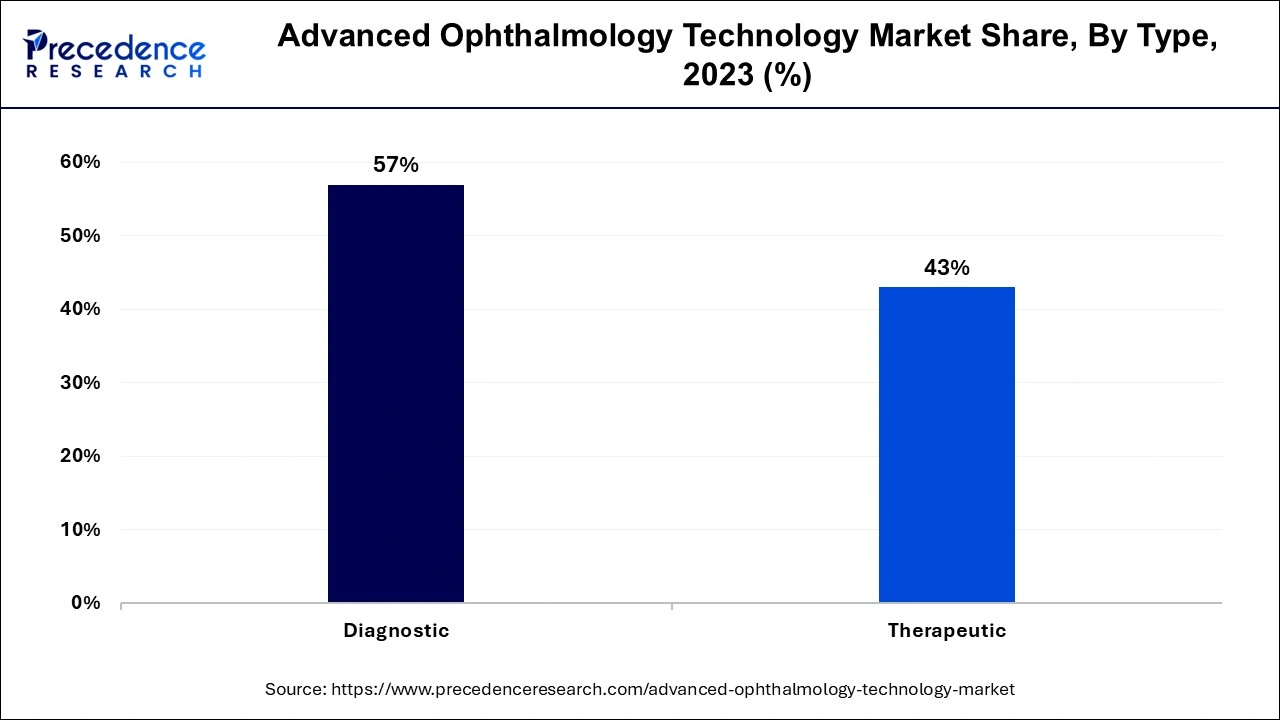
The therapeutic segment is expecting significant growth in the advanced ophthalmology technology market during the forecast period. It is known as the treatment for types of eye conditions such as allergies, glaucoma, retinal disease, infections, and others. There are several types of drugs associated with ophthalmic therapeutics, including contact lenses with drugs, ocular inserts, soluble ophthalmic drug inserts (SODI), ocular therapeutic system (OTS), artificial tear inserts, collagen shields, new ophthalmic delivery system (NODS), and minitablets.
The hospital segment registered its dominance over the advanced ophthalmology technology market in 2023. The rising adoption of hospitals for the treatment of any type of disease due to the better availability of healthcare professionals and the availability of surgical equipment is driving the demand for the hospital segment. Hospitals are adopting advanced ophthalmology technology for the efficient and accurate treatment of eye-related diseases. Advanced ophthalmology technology is effectively used by healthcare professionals or ophthalmologists to detect issues or diseases in the eyes of patients.
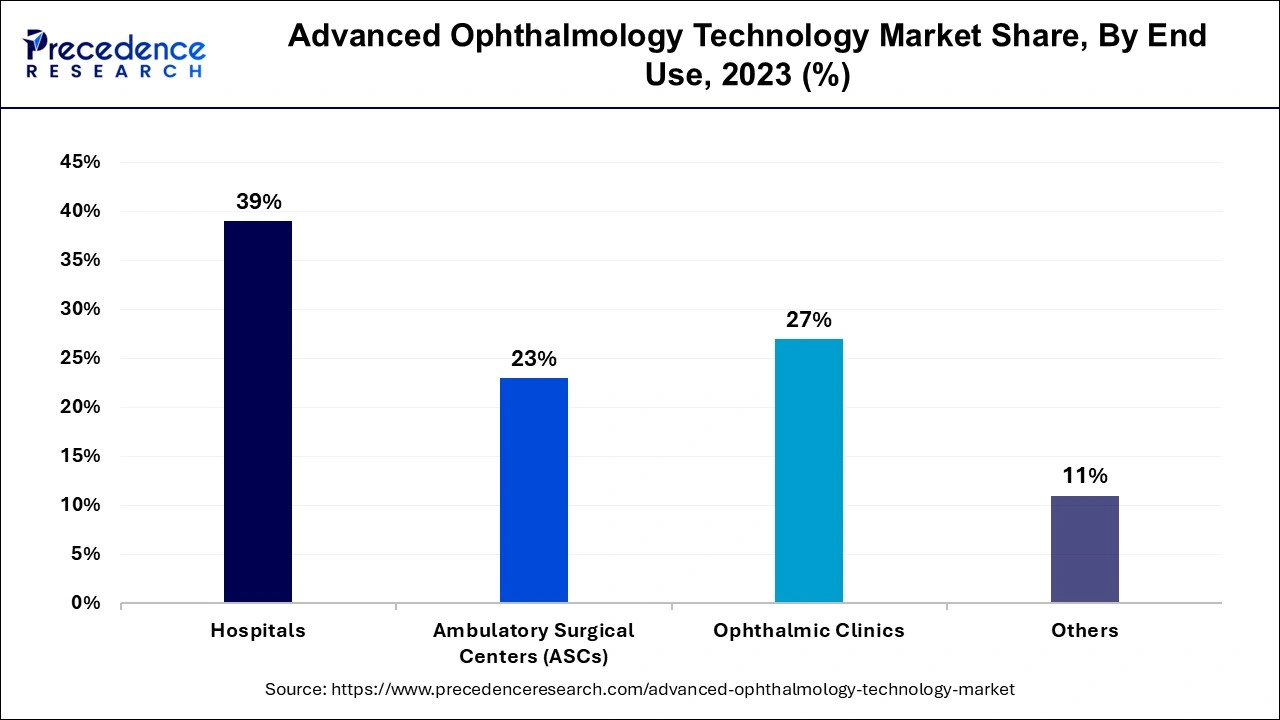
The ASCs (Ambulatory Surgery Centers) segment expects the fastest growth in the market during the forecast period. The ASCs (Ambulatory Surgery Centers) are exceptional outpatient treatment or surgery centers that are well equipped with modern facilities and healthcare professionals who specialize in the outpatient surgical process. They are the most cost-effective solution for the treatment of any type of disease and have a great track record for patient safety. The rising adoption of advanced ophthalmology technology provides better treatment and diagnostics for patients with any type of eye infection or disease.
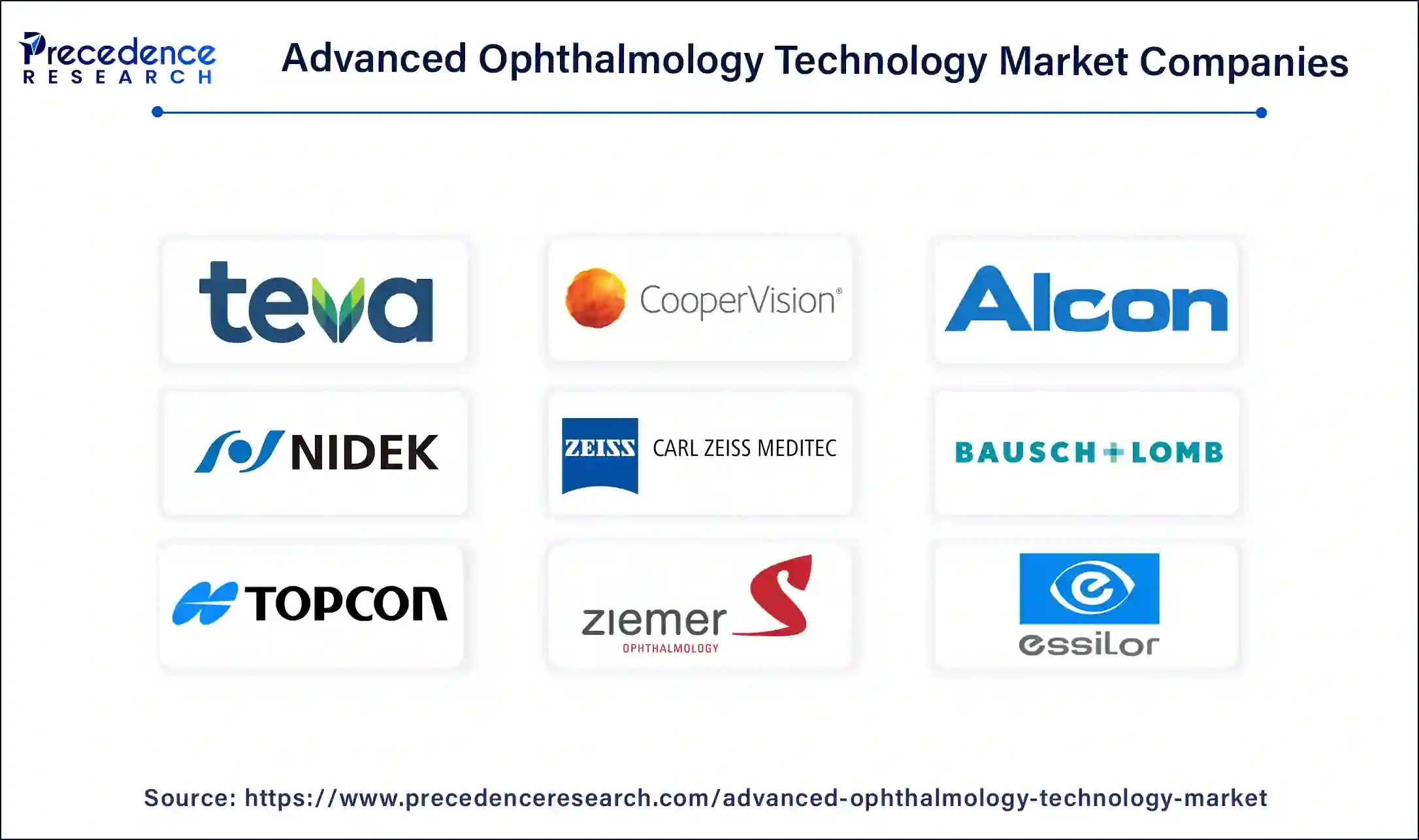
Segments Covered in the Report
By Type
By End Use
By Geography
For inquiries regarding discounts, bulk purchases, or customization requests, please contact us at sales@precedenceresearch.com
No cookie-cutter, only authentic analysis – take the 1st step to become a Precedence Research client
March 2024
February 2025
February 2025
February 2025